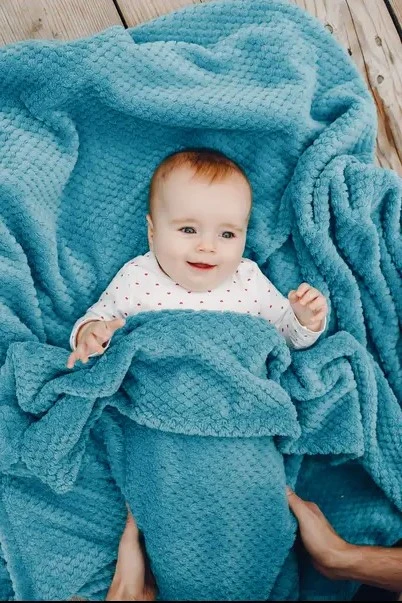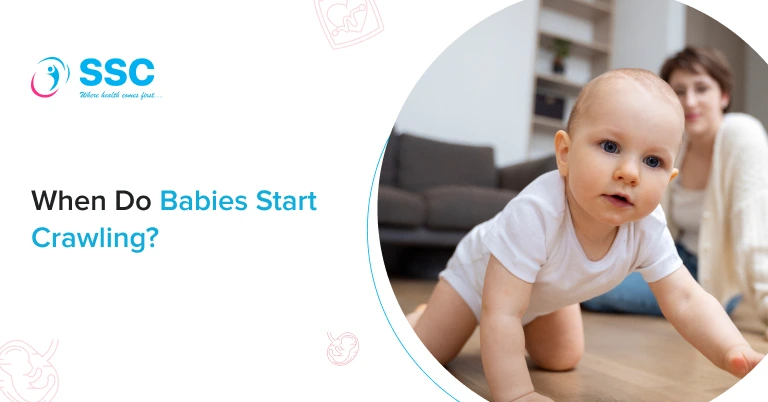How To Dress Baby For Sleep
How should a newborn be dressed for bed? Dressing a newborn for varying temperatures can be challenging as it’s vital to ensure their safety and comfort.
As parents, we understand how important it is to provide a secure and comfortable sleeping environment for our children to promote their development and well-being. The secret to creating happy days and restful nights is to dress your infant for sleep.
Dressing Babies for Bed:
For a more practical approach, here are some recommendations for dressing your baby for both day and night during the winter and summer seasons.
How to Dress a Newborn in Summer?
During the Day:
Babies under 6 months old should not be exposed to direct sunlight since their skin provides very little defence. A single layer of light cotton is perfect for hot days because it is breathable and comfortable to sleep in.
During Night:
Wear a light shirt or simply a diaper on warm evenings. If your infant kicks off blankets, use a single sheet that is tightly tucked in, making sure it doesn’t cover their face.
How to Dress a Newborn in Winter?
During the Day:
Always remember to dress your baby in more than one layer of clothing than you do. For instance, dress the baby in a sweater, a sleepsuit, and a jacket or jumper. Your infant is probably cold if you are.
Remove hats and additional clothing when you’re indoors if it wakes your infant. This keeps them cozy and prevents overheating.
During Night:
It should be sufficient to use a lightweight sheet and blanket or a sleepsuit with a sleeping bag. To lower the risk of SIDS, dress your newborn for the cold without overheating them.
Rather than using additional blankets, use an extra layer of clothing in a sleeping bag if your infant feels cold.
Note: In the early days, you will probably have to change your baby’s diapers several times during the night. Choose sleepwear with hooks or zippers to help with those sleepy, late-night changes. This will allow you to instantly return to calming your child without having to fumble with difficult buttons.
Should Newborn Wear Hat to Sleep?
Babies may overheat if they wear hats, as they release heat through their heads. Additionally, avoid loose clothing like hats, as they can fall off and hide your baby’s face, which could make breathing difficult.
Babies may wear a cap during the first few hours after birth to help control their body temperature. Hats, however, are not required to maintain the temperature inside once you get home.
How to Dress Baby for Sleep?
A common tip for dressing your baby for sleep is to add one extra layer than what you would wear at night. Since your baby shouldn’t have loose blankets or sheets, this keeps them safe.
This is only a general guide, though. The temperature and your baby’s preferences will determine the best sleeping clothes, but it’s crucial to avoid overdressing or using too much blanket.
Older people might overlayer, yet overheating is a serious risk factor for SIDS. During the first six months, this danger is greater, but toddlers can remain at risk.
Ensuring your child is as comfortable as possible during the night matters most when getting them dressed for bed. Since simplicity is the safest, keeping things simple is crucial.
Sleeping Bags and Suits:
Many parents prefer to use onesies, often known as sleepsuits. They help keep your baby warm without overheating and come in a range of fabrics for varying conditions. Choose comfortable fabrics and allow for movement, such as cotton, which is soft and breathable.
A secure baby sleeping bag or suit is yet another great choice. These are perfect for newborns who don’t want to be swaddled or who have outgrown it, which usually happens when they start rolling over at three to four months.
A sleeping bag keeps your baby warm and eliminates the need for blankets. It also keeps their head and face exposed for a safer night’s sleep.

Blankets and Similar Coverings:
You can start using thin, lightweight blankets or coverings if your baby has outgrown or no longer loves being swaddled, which usually happens around 3-4 months when they start rolling over.
While arranging their sleeping space, make sure the blankets are tucked in at chest level and position your baby’s feet at the bottom of the cot. The blankets or coverings mustn’t cover your baby’s face or head.

Baby Swaddling:
Swaddling usually gives newborns a sense of security and comfort. Soft textiles like cotton or muslin are perfect for effortless wrapping because they are lightweight, breathable, and flexible.
You can use swaddle bags as an alternative if swaddling feels challenging. It is better to stop swaddling when they start to roll over; you can use wearable blankets or sleep sacks.

Baby Wrapping:
Wrapping minimizes startle-induced waking and helps babies settle to sleep. It is safe from birth until babies begin rolling over at the age of three to four months.
Use muslin or light cotton wraps, making sure they don’t cover the chin or head and remain below the shoulders. While allowing for leg movement, the wrap should fit securely around the hips and chest.

Note: Swaddling involves tightly wrapping their arms and body for a baby’s comfort and security, and wrapping is looser; it provides warmth without significantly limiting movement.
What is the Correct Temperature for a Baby to Sleep?
The ideal room temperature for your baby’s sleep is between 68-72°F (20-22°C). By staying within this range, you can prevent your child from becoming too hot or too cold. You can maintain the proper temperature in the space by using a room thermometer. Creating cool, dark sleeping spaces will help your infant sleep better at night.
How Many Layers Should a Baby Wear to Sleep?
When dressing your infant for sleep, try to wear one more layer than you would if you wanted to be comfortable in the same space. This keeps your infant warm without running the risk of overheating or over-bundling.
For extra comfort, start with a comfy onesie as the starting layer and add long sleeves or footies as necessary.
How Can You Tell if a Baby Is Too Hot at Night?
The following are indicators that your infant is sleeping too hot:
- Your infant’s hair or neck is sweating.
- The cheeks of your infant are flushed.
- The centre of your baby—the back, neck, chest, and stomach—feels sweaty or clammy.
To make sure your baby sleeps safely and peacefully, follow your gut and pay attention to these indicators.
How Can You Tell if a Baby Is Too Cold at Night?
The following are indicators that your infant is sleeping too cold:
- Cold hands and feet are normal, but if blue or blotchy, warm them up.
- Check chest, neck, back, and tummy for signs of cold.
- Waking up repeatedly during the night.
- Excessive movement during sleep.
If it is too chilly, your baby will feel uncomfortable and may have problems falling asleep or waking up more often.
How Accurate are Baby Monitor Temperature Readings?
Temperature readings from baby monitors can differ depending on the monitor model, placement, and room conditions.
Accuracy can also be impacted by camera heat. Avoid obstructing airflow, use a separate thermometer, and position the monitor in a well-ventilated area to guarantee a more accurate measurement.
Tips for Baby Sleepwear:
- Check Room Temperature: Use a room thermometer to ensure the nursery is maintained at a comfortable temperature. Adjust your infant’s clothes appropriately to prevent them from becoming too hot or too cold.
- Layer Wisely: Use layers that are easy to add or remove, breathable, and light. This lets you change your baby’s clothes during the night without packing too much.
- Select the Correct Fabrics: To keep your baby comfortable and lower the chance of overheating, choose natural, breathable materials like cotton.
- Check for the Right Fit: Make sure the sleepwear fits properly, neither too tight nor too loose to be dangerous.
- Avoid Possible Risks: Avoid clothing with big buttons, ties, or strings, as they might be hazardous while sleeping. You should also always feel your baby’s back or chest to check their temperature.
Bottom Line:
As a new parent, deciding how to dress your baby for bedtime is one of the many decisions you’ll face.
Even if there are several elements to take into account, parents need as much sleep as possible. Therefore, it’s not worth losing sleep over. Trust your gut and follow these suggestions because the end goal is a restful night’s sleep for both of you.
Frequently Asked Questions
What should Baby Wear to Bed?
To ensure your little one sleeps comfortably and safely, dress them in breathable, fitted layers to keep them from getting too hot or too cold. You can easily add or remove layers based on their needs.
What should Newborns Wear To Sleep?
To keep your newborn safe and comfortable, dress them in sleepwear that provides warmth without causing overheating, as overheating can raise the risk of SIDS. On warmer nights, a simple nappy and singlet will keep your baby cool. During cooler weather, choose a lightweight jumpsuit or add gentle layers to ensure they stay warm.
What to Dress a Newborn in at Night?
Keep your baby's bedding and sleepwear simple at night. They can stay comfortable in just a diaper on warm nights. If your little one kicks off their covers, just leave the diaper on and use a single, well-secured sheet to keep them comfortable.
How to Dress a Baby for Sleep without a Sleep Sack?
One of the best ways to keep your child at the right temperature is to dress them in layers. To keep them warm and comfy, start with a soft cotton suit or onesie as the base, then add comfortable layers like footed pyjamas.









